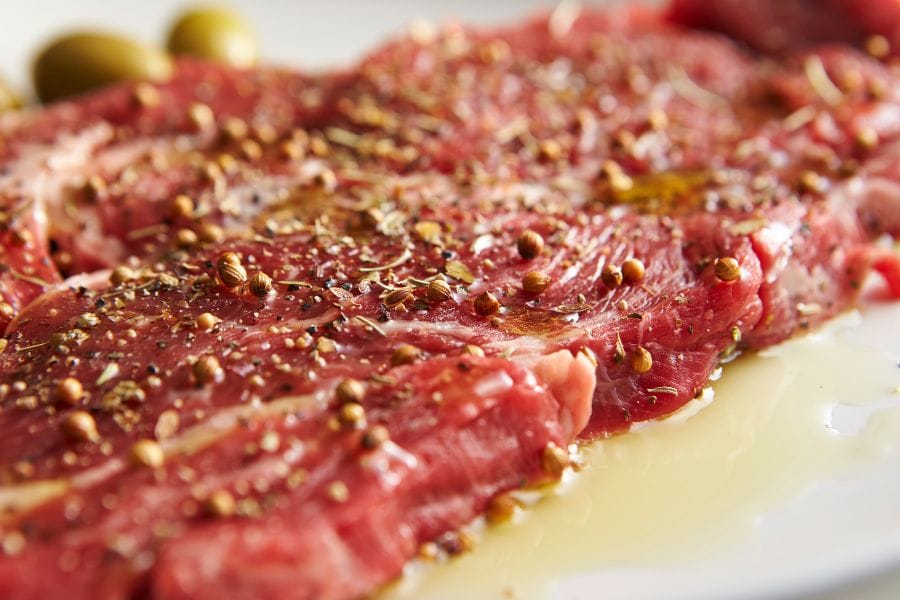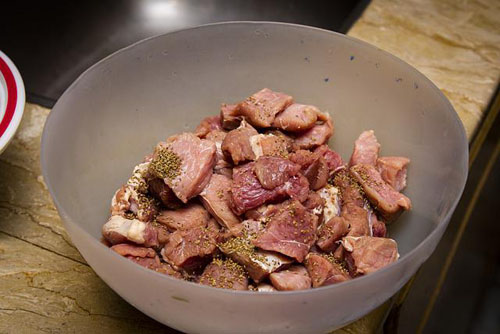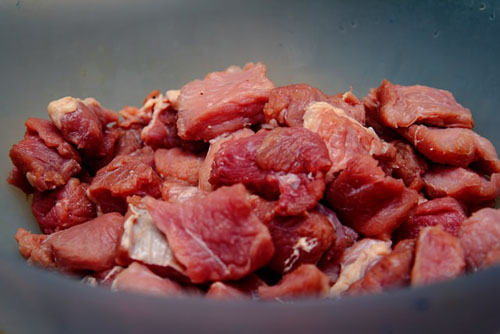I recently made velveted beef for my Thai green curry recipe. And guess what? It was a hit! The meat was so tender, silky, and smooth. So, I thought it would be great if I could share this hack with you.
I’m a fan of Chinese stir-fry dishes and brisket cooking. I have been velveting beef since I learned to make stroganoff. Until recently, I only used mechanical and thermal methods to tenderize my flank steak beef. However, I discovered two infallible and easier ways to perfectly velvet beef, with soy sauce and baking soda.
I’ll show you how to velvet beef in both procedures. You can have it all done from start to finish in about 40 minutes. However, it’s up to you. These methods are foolproof, so enjoy every preparation, cooking step, and, of course, the tasting.

Velveting meat is used for making tender beef in Chinese stir-fry recipes. It’s a way of preparing sautéed meat in a way that they become tenderized.
Of course, we all know what velvet feels like. It’s soft and smooth. Although I don’t think it’s relatable enough or a perfect analogy to describe “velvet beef,” that should give you an idea about what we’re trying to do.
In essence, there are two ways of velveting sliced beef:

Baking soda is an item with many uses. I often use it to break down the fibers of meat and therefore tenderize it. Be careful, though. Although it’s safe, this method may not help you get a pleasant taste, especially on the first try.
This method is achieved by pouring some soda into water. The pieces of meat are soaked for about 30 minutes or left in the refrigerator for 30 to 35 minutes.
The first involves coating the meat in egg white, cornstarch, salt, and rice wine before plunging everything briefly into hot oil and then stir-frying. This works mainly because of the egg whites, which are naturally alkaline.
Alkaline egg whites tenderize beef for stir fry dishes. Also, acidic solutions like oyster sauce, vinegar, and lemon are used for tenderizing beef for stir-fry dishes. I’ll show you how it’s all done.
Regardless of the method you use, you’re allowed to use larger pieces of beef, up to 500 grams. If done well, you’ll achieve that flank steak beef texture found in Chinese restaurants.
But does this method really work? By now, you should be asking about the science behind it.
Start by beating the egg in a bowl and lay it aside.
Next, you have to wash the meat. It could be a tenderloin cut or any cheap cut. Then, finely cut it into a more manageable size. I like them sliced. It allows the velveting sauce you’re applying to seep in well.
The next step is preparing the marinade. Mix the meat with the potato starch, the previously beaten egg, 2 tablespoons of chicken broth, sugar, salt, and pepper. Leave to marinate for at least 30 minutes (you can even leave to macerate overnight in the refrigerator).
After this period, you’ll see that the fibers are now softened, and the grains of the meat are now a bit apart and no longer firm. When you feel it’s time to stir-fry the velvet meat, cut the onions into very thin strips and the chives into rings. Rinse and dry the coriander.
Heat the oil in a wok (or a large frying pan). Add your velveted beef one after the other when the oil is hot.
Then cook over high heat for 2-3 minutes. Next, remove the meat from the wok using a slotted spoon and reserve it in a dish. Keep the oil in the wok.
Then put the onions in the wok with the oil still very hot. Leave to brown for 3-4 minutes, then put the meat back, adding the rest of the chicken broth.
Cook over high heat while stirring until the sauce thickens. Arrange in a serving dish, sprinkle with minced chives and coriander. Serve immediately.
Related Reading

Next, I’ll show you the steps to velveting beef using the baking soda method, including the ingredients and other variations.
Yes, tough meat cuts used for stir-fries, braising, and smoking react excellently to velveting.
What happens is that soda or whatever velveting ingredient you’re using itches away at the fat molecules. Then, the freezing process tears them apart. After freezing them for some minutes when you thaw them out again, all the fat fibers and ligaments are torn apart. So it makes it incredibly soft even if you stir-fry it at very high heat.
This is why it’s used in Chinese restaurants’ stir-fry and fillet beef dishes. It’s a way of taking a cheap cut and making it seem more expensive. That is the nature of peasant food – making the most of what’s available.
For centuries in China, cattle were used exclusively for agricultural purposes. So, their meat was only consumed when the animal was too old to do its job.
So there you have it; the resulting beef from these animals was muscle-filled and very tough.
To tenderize beef, the Chinese adopted a specific cooking method. They opted for marinading meat, most often based on egg and soy sauce.
Although ideas about preparing and consuming beef have evolved, these marinated preparations remain in today’s Chinese culinary methods.
If you’re not ready to stir-fry, you can season the meat after the soda has been rinsed off and refrigerate or freeze it.
The usual practice for me is to use a teaspoon of English mustard powder, a teaspoon of garlic powder, and a good sprinkling of salt.
When you freeze it and thaw it back out, you can use it for all types of recipes. For example, if you want a hot fried beef sandwich, it would taste great since it’s already seasoned with garlic and English mustard.
After mixing it all in a bowl, you need to lay the beef cuts one by one into a takeaway container. Or, you could just put it in a freezer bag. Basically, you need to freeze it evenly and take it out the following day, week, or up to four months. While it freezes, the fat and sinew molecules break apart so that when you stir-fry it, it’s unbelievably soft.
Be careful, however. Beef is best kept in the fridge within 3 to 5 days maximum, according to the USDA. However, if you’re velveting chopped beef, note that chopped ground beef has a shelf life of 1 to 2 days in the fridge. So whether chopped or sliced, you can freeze it for up to 4 months. However, I wouldn’t advise that you use chopped beef for this preparation.

Related Reading
Ideally, you should only velvet beef for 20 to 30 minutes. That’s enough time for all the velveting sauce or baking soda mixture to tear off all those connective tissues holding the flesh firmly.
The most common velveting ingredients include egg white, sesame oil or sunflower oil, cornflour, and salt. Also, just baking soda or bicarbonate soda is used. Others familiar with Chinese cooking styles use only egg white, corn starch, and Chinese (HaoSing) wine for the non-soda velveting method.
Yes. First, you must slice your beef like you’re making pastrami or corned beef. Then you have to coat it in baking soda for some minutes. This process tears all the fibers apart, and when you thaw it out and stir-fry it, it’s incredibly tender. I learned that it’s the same technique they use in making Chinese flank steak beef and other recipes that involve meat. It’s something I also use in my stroganoff recipes.
Related Reading
There are several ways to tenderizing beef for stir-fries. You can try mechanical or heat methods. If you like, you can make use of chemical methods such as baking soda, salt, or dairy products to tenderize meat.
Note that if you’re using baking soda or any other food chemicals, you will need to wash them off after the velveting period before you begin stir-frying or preparing with whatever recipe you have in mind.
However, chemical compounds like baking soda can leave some taste in the meat. The most effective technique of velveting that I use involves using egg, sugar, and sauce. This is a technique that the Chinese have used for ages, and you can try it out too.